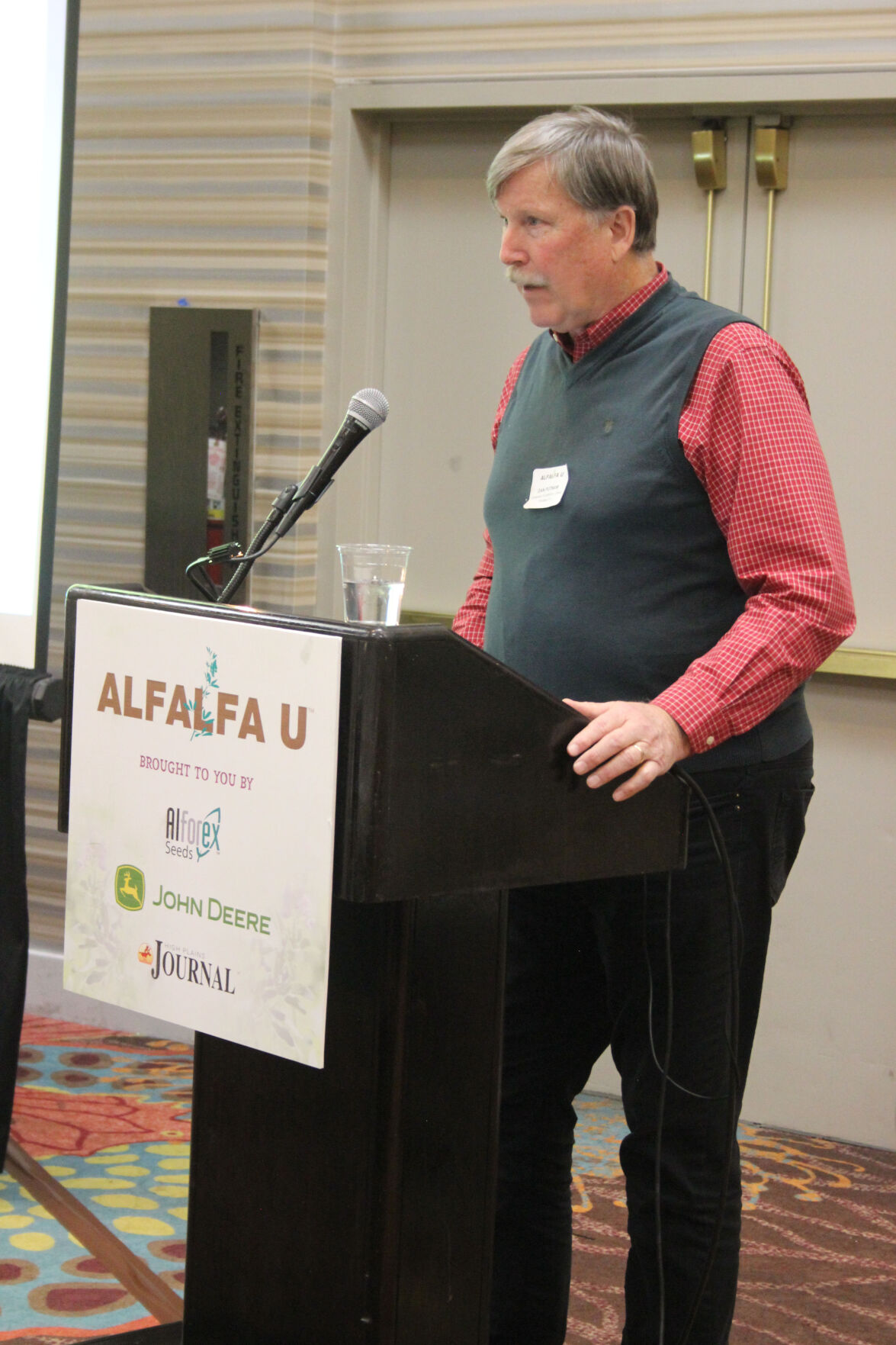Dan Putnam, Extension agronomist and forage specialist at the University of California-Davis, spoke at a recent Alfalfa U event in Reno, Nevada, on the key integrated pest management strategies growers can employ to reduce pests in their fields, lower inputs, increase profits and set the stage for sustainable, healthy crops in the future.
“I’m not trying to devalue the use of pesticides, but the fact is there are lots of things that we should be doing that are pretty important for reducing the risk of pests,” Putnam said.
When Putnam refers to pests, he is talking about more than just insects. Bugs, gophers, rodents, weeds, nematodes and diseases all fall under the pest umbrella, and they can be the difference between optimum quality and yield. Putnam listed several key practices that impact IPM, including: soil preparation and fertility, stand establishment, variety selection, irrigation management, harvest management and cropping system and rotation. He said stand establishment is probably the most important IPM practice as far as single practices growers can manage.
“The key issue here is that integrated crop management impacts IPM because you have a healthy root system and a vigorous plant,” he explained. “A vigorous, deep-rooted alfalfa plant is probably the best defense against weeds, insects and diseases.”
Drainage is vital to soil preparation and fertility and it can also prevent diseases and stand loss.
“Standing water is the number one enemy of alfalfa,” he said.
Putnam recommend growers utilize soil testing, because one major safeguard from pests is healthy soil. Soil condition and preparation impacts pests through drainage, which disrupts gophers and rodents and allows oxygen to infiltrate, which improves root health.
Putnam said one of the most common mistakes he sees growers make, is not shallow planting alfalfa.
“It’s a great opportunity for weeds when you don’t have a good stand of alfalfa,” he explained. “A 2- or 1-inch planting has much lower density than a half or quarter-inch planting. Alfalfa really is a poor competitor during that early stand establishment phase. It’s kind of a wimp, so you should control weeds during stand establishment and that’ll do you many favors when you’re looking at weed control later on in the growth of the crop.”
Although there is no silver bullet to solve the complicated and multi-faceted issue of pests in alfalfa, applying integrated crop management strategies can not only lower pest populations, but also offer multiple other benefit as well when it comes to soil health, yield, quality and decreased inputs.
“As a philosophy, we should really think of integrated crop management as a key approach to pest management, and not just looking at pests with a see-it-and-kill-it-mindset,” Putnam said.
Lacey Vilhauer can be reached at 620-227-1871 or [email protected].




